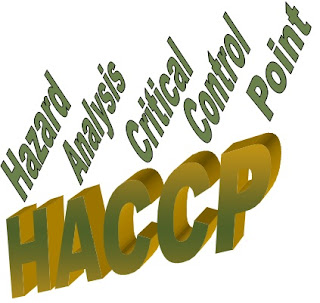

In our example, using the appropriate thermometer and reading method is all it takes to ensure that food is cooked to the right temperature. The way in which the CCP is monitored is very important indeed, and in some cases, it’s much trickier than in others. Establishing a critical limit means deciding the exact temperature that the meat must reach so that it is safe to eat, with no risk of harmful bacteria. If we go back to the example of cooking a piece of meat, the risk is that undercooked food could contain harmful bacteria, which means the meat has to reach a certain temperature to kill these bacteria. A critical limit is a value or state that determines whether a hazard is present or the risk has been controlled, giving a clear way of knowing whether a control is doing its job Establish Critical Limitsįor each of the established critical control points, it must be decided what exactly the critical limits are, and how the risks can be controlled by this. These CCPs ( critical control points) can be anywhere where you’re able to introduce any controls.įor example, if you’re cooking a piece of meat that needs to be at a certain temperature to be safe, a CCP is the point at which you determine whether or not the item has been cooked safely and is ready to be served to a customer. Once risks have been noted and evaluated, it’s time to identify the exact points in the food manufacturing process at which the risks may arise, and could ultimately be controlled. This means looking for any biological, physical or chemical risk that might arise during the food production, storage, packaging or any other process.Ĭould bacteria pose a problem? Could foreign bodies find their way into the food? Could allergens find their way into mislabelled products? There are many questions to ask at this stage if you want your hazard analysis to be thorough and effective.
#Haccp process 3 complex food prep full#
Conduct a Hazard AnalysisĪs with most hazard reduction frameworks, the very first step in HACCP is in conducting a full hazard analysis, or risk assessment, of the processes that you’re responsible for. In order to understand how important HACCP is, and what it does, it helps to know the main principles of the approach. HACCP is now an international standard (ISO 22000 FSMS 2011) and within this, there are seven clear principles which must be adhered to be correctly abiding by HACCP. HACCP aims to deal with all of these and is a structured approach that can fit with most processes. There are potential risks where the raw foods are produced, where they are cooked and combined, where they are packaged, and where they are stored ready for sale. It’s also useful to know that HACCP was designed so that it can be used at any stage of the food production process. You can implement HACCP into processes in any size of environment, from large factories where products are mass produced to small working kitchens where food is prepared by hand and served straight to customers. It looks to introduce checks and standards to food manufacturing or preparation processes that reduce risks as far as possible, reducing chemical, physical and biological risks to people. HACCP is a food hygiene risk assessment framework that is used to ensure that food products are safe to eat. In this article, we’re going to take a look at what HACCP is, explain why it’s such an important part of food safety training and share how you can ensure either your employees understand it fully, or you yourself have the appropriate training. HACCP is a key part of food health and safety because it’s a standardised process that is used to conduct risk assessments and manage the possible hazards in a kitchen. HACCP is a framework that was created in response to the potential risks that are present when food is being prepared, manufactured or packaged, helping those responsible to identify, control and minimise risks.

If we think of all the work, processes, and parties involved in the production of a meal or food product, it becomes clear how many opportunities there are for risk to be introduced.


 0 kommentar(er)
0 kommentar(er)
